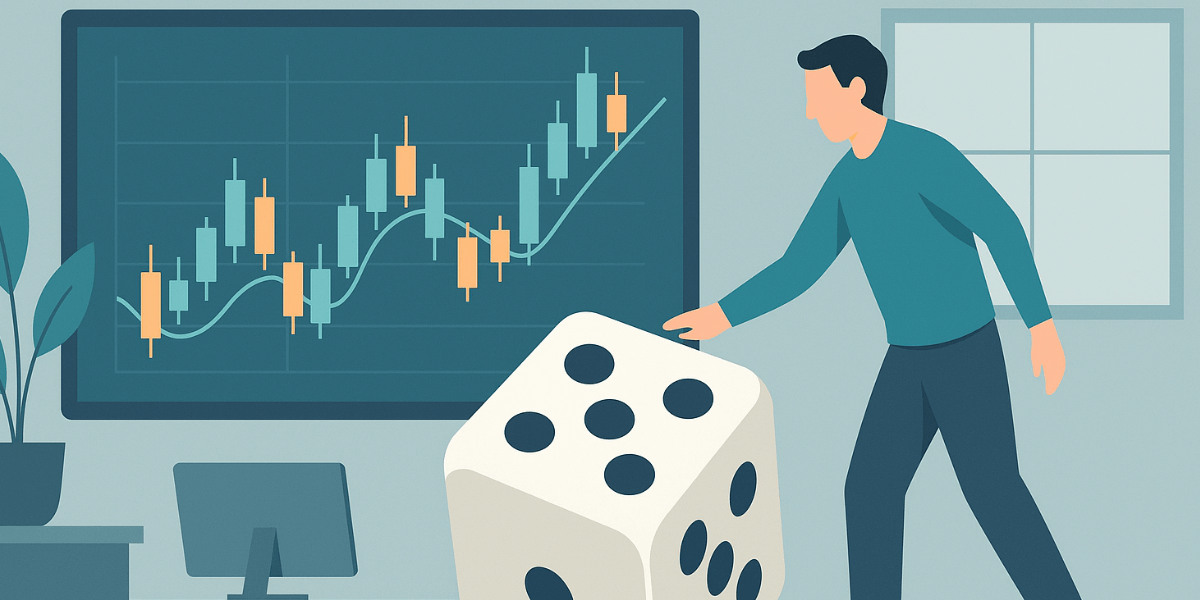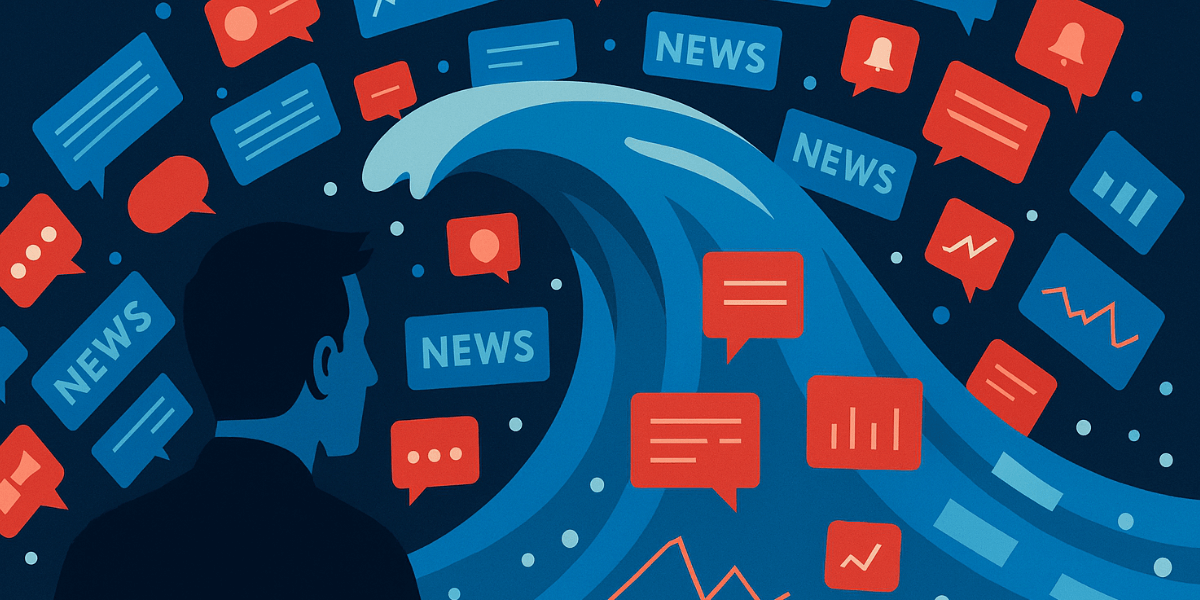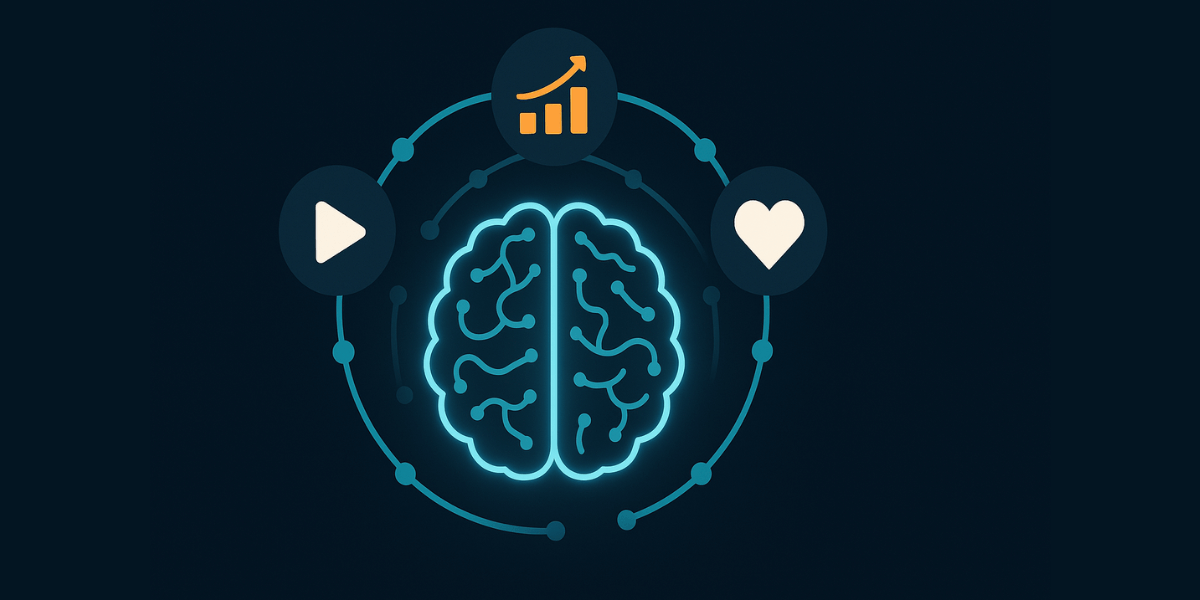In the relentless environment of modern financial markets, traders face an invisible yet formidable adversary: decision fatigue. Unlike volatility or liquidity risk, decision fatigue does not appear on the screen. It quietly erodes judgment, distorts risk perception, and leads to impulsive trades or paralyzing hesitation. Every chart scanned, every news headline evaluated, and every entry or exit choice consumes a finite cognitive resource — willpower and attention. As the trading day unfolds, that resource depletes. The result is predictable: degraded performance, emotional reactivity, and costly errors disguised as intuition.
Understanding the science behind decision fatigue allows traders to transform it from an unseen liability into a manageable variable. This article dives into the psychology and neuroscience of cognitive depletion, its manifestations in trading behavior, and the strategies top professionals use to conserve and restore decision quality. We also explore the physiological side — glucose, dopamine, and sleep cycles — and how these biochemical rhythms interact with market microstructure and information flow. The goal is practical mastery: learning how to think clearly when the market demands constant thinking.
What Is Decision Fatigue?
Decision fatigue refers to the deterioration of decision quality after a long session of decision-making. The brain, much like a muscle, experiences reduced performance after repeated exertion. Each choice consumes a measurable amount of mental energy — specifically in the prefrontal cortex, the region responsible for executive function, judgment, and impulse control. When that region becomes metabolically exhausted, the brain defaults to simpler, faster systems of thought: emotional heuristics, habit, and immediate gratification.
In trading, this manifests as overtrading, revenge trading, abandoning stop losses, or failing to pull the trigger when opportunity arises. Ironically, the more decisions traders make in search of control, the less control they retain. Cognitive science calls this the ego depletion effect<: willpower is finite, and complex decision environments accelerate its depletion.
The Neuroscience Behind Cognitive Depletion
Modern neuroscience offers concrete explanations for decision fatigue’s impact on behavior. The prefrontal cortex governs planning, self-regulation, and the ability to resist short-term impulses. These functions rely on glucose metabolism and neurotransmitters like dopamine and serotonin. As traders evaluate constant streams of input — price ticks, indicators, sentiment data, news — the prefrontal cortex consumes disproportionate energy.
When glucose availability drops or dopamine regulation becomes imbalanced, the brain begins prioritizing speed over accuracy. It moves from deliberate “System 2” processing (analytical reasoning) to impulsive “System 1” shortcuts (intuition and habit). The trader might not feel physically tired, yet their ability to evaluate risk-reward deteriorates. Reaction replaces reflection.
Neuroimaging studies show that after sustained cognitive effort, the anterior cingulate cortex — responsible for error detection — reduces its activity. This means traders literally become less sensitive to mistakes. Once the monitoring system weakens, emotional biases like overconfidence or loss aversion rush in unopposed. The consequence is a cycle of errors justified by temporary conviction.
How Decision Fatigue Manifests in Trading Behavior
Decision fatigue rarely announces itself. It builds silently through small deviations from the process. Over the course of a session or week, these deviations accumulate into measurable behavioral drift. The most common symptoms include:
- Impulse Trades: Quick, unjustified entries based on emotion rather than signal. Typically occur after long sequences of monitoring without reward.
- Confirmation Seeking: Exhausted minds prefer comfort. Traders selectively interpret data that supports existing positions, ignoring contradictory signals.
- Delayed Exits: Cognitive fatigue slows reaction to change, leading to late stop activations and diminished profit capture.
- Excessive Screen Time: When attention wanes, traders paradoxically increase monitoring in search of clarity, deepening exhaustion.
- Reduced Risk Calibration: Position sizing becomes erratic; either overly cautious or dangerously aggressive, depending on emotional state.
These patterns are not moral failures. They are predictable neurophysiological consequences of depleted cognitive bandwidth. The key is to identify them early and restore decision quality before significant capital loss occurs.
Environmental Factors That Accelerate Fatigue
Fast-moving markets magnify decision fatigue through two channels: information overload and time pressure. Both force traders to compress complex assessments into increasingly shorter intervals.
1. Information Density
Each data point — tick chart, tweet, macro release, sentiment shift — requires triage. Even when filtered, the sheer density of potential signals taxes cognitive load. The human brain is not evolved for simultaneous multi-asset monitoring or real-time statistical inference. As mental bandwidth saturates, noise begins masquerading as signal. Traders respond reflexively rather than strategically.
2. Market Volatility
In high-volatility regimes, uncertainty spikes, and the number of potential decisions per minute rises exponentially. Each rapid shift demands situational reassessment: “Do I hold? Cut? Reenter?” The emotional cost compounds with the physical strain of maintaining hyperfocus. Extended exposure leads to physiological stress markers — elevated cortisol, increased heart rate variability, and impaired working memory.
3. Platform Design
Trading interfaces themselves can exacerbate fatigue. Platforms use alerts, flashing colors, and immediate feedback loops designed for responsiveness, not reflection. The same mechanisms that gamify trading success also shorten attention span and promote dopamine depletion. This effect parallels social media addiction: the trader becomes trapped in micro-cycles of stimulus and response.
The Hidden Cost: Cognitive Drift and Loss of Process Fidelity
Every professional trader relies on some version of a process — predefined setups, rules for risk, and filters for market conditions. Decision fatigue corrodes process fidelity, not through conscious rebellion but through gradual substitution. As energy declines, the brain substitutes heuristics (“this looks similar”) for structured analysis (“this matches criteria A, B, C”).
Behavioral logging studies among institutional desks show a clear pattern: by late afternoon, deviation from process increases by 23–35%. Most traders are unaware of this drift until after the session. The result is higher variance in returns and inconsistent adherence to edge. In probabilistic environments, such small degradations accumulate geometrically over time, producing performance erosion far larger than any single error could explain.
The Physiology of Decision Depletion
While mental stamina feels abstract, it rests on physical processes. Three biological variables are central to cognitive endurance:
1. Glucose Availability
The brain consumes roughly 20% of the body’s glucose supply. Complex decisions, especially under uncertainty, intensify metabolic demand. When glucose drops, the prefrontal cortex loses efficiency, leading to shorter attention spans and riskier behavior. Consistent nutrition and stable blood sugar—through slow-digesting carbohydrates, hydration, and timing—directly improve cognitive durability.
2. Dopamine Regulation
Dopamine governs motivation and reward anticipation. Fast-moving markets provide frequent micro-rewards (small wins, alerts, feedback), which, over time, desensitize dopamine receptors. The result is reduced satisfaction from routine process adherence and increased craving for novelty — exactly the state in which impulsive trades emerge.
3. Circadian Rhythms and Sleep Debt
Traders operating across time zones or during extended sessions accumulate sleep debt, which compounds decision fatigue exponentially. The prefrontal cortex recovers primarily during deep sleep. Chronic deprivation leads to lasting deficits in error detection, emotional regulation, and risk discrimination.
The Economics of Attention
Attention is a finite economic resource. Each decision consumes a portion of it. In markets, attention allocation determines profitability as much as capital allocation. The paradox of modern trading is that information access has increased exponentially, while the human capacity to process it remains fixed. This asymmetry makes attention the scarcest input in alpha generation.
Decision fatigue distorts attention economics in predictable ways:
- Attentional Narrowing: The trader fixates on one asset or timeframe, missing broader correlations.
- Attentional Diffusion: Alternatively, attention fragments across too many signals, producing shallow analysis everywhere and mastery nowhere.
- Emotional Hijacking: Fatigue lowers emotional resistance, allowing short-term stimuli (tweets, volatility spikes) to redirect attention abruptly.
The only sustainable solution is to treat attention as capital: scarce, measurable, and worthy of protection through deliberate allocation.
Strategies to Combat Decision Fatigue
There is no way to eliminate cognitive depletion entirely, but it can be managed systematically. Professional traders and behavioral coaches employ several evidence-based frameworks to preserve decision integrity throughout the trading cycle.
1. Decision Architecture: Pre-Commitment and Templates
Predefine as much as possible before markets open. Use rule-based templates for entries, position sizing, and exits. The fewer ad-hoc choices required intraday, the lower the cognitive cost. Structured templates shift decision-making from reactive mode to verification mode — “Does reality match my preconditions?” rather than “What should I do now?”
2. Cognitive Periodization
Just as athletes train and recover cyclically, traders should alternate between high-focus and recovery intervals. Implement strategic breaks every 60–90 minutes. During breaks, engage in non-cognitive activities — standing, stretching, or controlled breathing. The brain clears metabolic waste through cerebrospinal flow, a process impaired by continuous concentration.
3. Environmental Hygiene
Optimize workspace lighting, posture, and screen color temperature to reduce visual strain. Remove non-essential notifications and visual clutter from trading screens. Cognitive friction compounds fatigue; simplification restores capacity.
4. Nutritional and Physiological Support
Stabilize blood sugar through balanced meals. Avoid caffeine surges late in the session; while stimulants mask fatigue, they worsen decision recovery afterward. Hydration supports neural conductivity — even mild dehydration can lower cognitive performance by 10–15%.
5. Decision Batching
Group similar decisions together. For example, update stop levels for all positions in a single block, rather than one by one throughout the day. Batching reduces context switching, one of the largest hidden drains on mental energy.
6. Mental Reset Rituals
Use micro-resets between trades: slow exhale cycles, posture shifts, or a momentary gaze break. These actions activate the parasympathetic nervous system, resetting cognitive load without requiring full rest periods.
7. Process Journaling
Record not only trades but also perceived mental energy levels, attention span, and emotional tone. Over weeks, patterns reveal when fatigue sets in and which environmental or nutritional variables accelerate it. Once identified, those triggers can be managed proactively.
Quantifying Fatigue: Metrics and Tracking
Behavioral metrics enable traders to approach fatigue management as a data-driven approach, rather than a philosophical one. Key measurable indicators include:
- Decision Density: Number of discretionary choices per hour. Higher density correlates with greater fatigue probability.
- Process Deviation Index: Frequency of trades outside pre-defined setups.
- Reaction Time Drift: Increase in latency between signal appearance and execution.
- Error Recovery Time: Duration needed to regain baseline confidence after a mistake.
Simple logging of these metrics, even manually, converts self-awareness into quantifiable risk control. Over time, traders learn to forecast their own mental stamina curves the same way they forecast volatility.
The Role of Technology in Reducing Decision Load
Paradoxically, the same technology that overwhelms traders can help manage fatigue when designed thoughtfully. Algorithmic tools, AI assistants, and workflow automation can offload mechanical or repetitive tasks, preserving cognitive energy for strategic thinking. Examples include:
- Automated Alerts: Triggered only when specific criteria are met, reducing constant chart monitoring.
- Position Management Scripts: Pre-coded exit logic that enforces risk discipline automatically.
- AI Sentiment Filters: Tools that summarize or score news flow, minimizing manual triage.
- Smart Layout Systems: Platforms that reorganize workspace dynamically based on volatility or active trades.
The principle is simple: automation should eliminate decisions that do not require human intuition, leaving mental bandwidth for those that do.
Psychological Recovery After Fatigue
Decision fatigue cannot be solved by willpower alone; it requires genuine recovery. Psychological restoration involves three dimensions: detachment, replenishment, and reflection.
1. Detachment
Full cognitive recovery demands disengagement. Stepping away from screens — ideally outdoors — allows neural circuits to reset. Active rest (walking, light exercise) accelerates metabolic waste clearance from the brain and restores attentional control.
2. Replenishment
Engage in activities that replenish dopamine without market risk: music, art, or social interaction. The goal is to rebuild reward sensitivity so disciplined trading feels satisfying again.
3. Reflection
Post-session journaling converts fatigue episodes into feedback loops. Instead of shame, treat errors as data on system performance. Over time, traders develop metacognitive awareness — the ability to notice mental state degradation before it impacts execution.
The Organizational Angle: Managing Team Decision Fatigue
For trading desks and investment teams, decision fatigue operates collectively. When multiple individuals share stress cycles, the group exhibits correlated bias: herd confirmation, reactive consensus, or defensive inaction. To mitigate this, teams can institutionalize recovery protocols:
- Rotate high-cognitive-load roles (execution, analysis) to distribute fatigue evenly.
- Establish “decision blackout” periods where no discretionary changes are permitted during peak stress.
- Incorporate structured dissent in meetings to maintain analytical diversity when mental energy runs low.
- Track team-wide metrics like process deviation rate or end-of-day volatility exposure drift.
Conclusion
Decision fatigue is not a character flaw or a lack of discipline — it is a biological limit to cognitive endurance. In fast-moving markets, where milliseconds and emotions collide, managing this limit separates consistent professionals from reactive participants. The science is clear: sustained performance depends not just on skill or strategy, but on energy management, structured rest, and environmental design. By acknowledging mental depletion as a quantifiable variable, traders can engineer processes that preserve clarity when it matters most. The market will always move faster than human cognition; the edge lies in knowing when to slow the mind so the next decision counts.
Frequently Asked Questions
What is decision fatigue in trading?
Decision fatigue is the decline in judgment quality after prolonged decision-making. It results from mental energy depletion in the prefrontal cortex, leading to impulsive or inconsistent trades.
How does decision fatigue affect trading performance?
It causes overtrading, poor risk calibration, and abandonment of process. Traders may chase setups, mismanage exits, or become overly cautious at key moments due to reduced cognitive control.
What are early signs of decision fatigue?
Increased emotional reactivity, inconsistent sizing, slower reaction times, and reliance on intuition over predefined strategy are key indicators of cognitive depletion.
Can decision fatigue be prevented?
Not entirely, but it can be managed with structured breaks, decision batching, process templates, nutrition, and automation that reduces unnecessary cognitive load.
Does nutrition really impact trading performance?
Yes. Stable glucose levels and hydration sustain prefrontal efficiency. Spikes or drops in blood sugar can directly impair executive function and risk assessment.
What is the best recovery method after decision fatigue?
Detachment from screens, moderate physical activity, and restorative sleep. Journaling post-session also helps identify triggers and prevent future fatigue cycles.
How can teams mitigate collective decision fatigue?
By rotating responsibilities, enforcing rest cycles, promoting dissent in decision-making, and monitoring behavioral metrics across members.
Is decision fatigue worse in volatile markets?
Yes. Higher volatility increases the number of decisions per minute and amplifies emotional strain, accelerating depletion of mental resources.
What technologies help reduce fatigue?
Automation tools, AI-based alerts, and rule-based scripts that minimize manual intervention allow traders to conserve focus for high-value decisions.
Why do traders underestimate fatigue?
Because cognitive exhaustion rarely feels like tiredness — it feels like confidence. The brain disguises depletion with emotional certainty, making awareness the first defense.
Note: Any opinions expressed in this article are not to be considered investment advice and are solely those of the authors. Singapore Forex Club is not responsible for any financial decisions based on this article's contents. Readers may use this data for information and educational purposes only.







